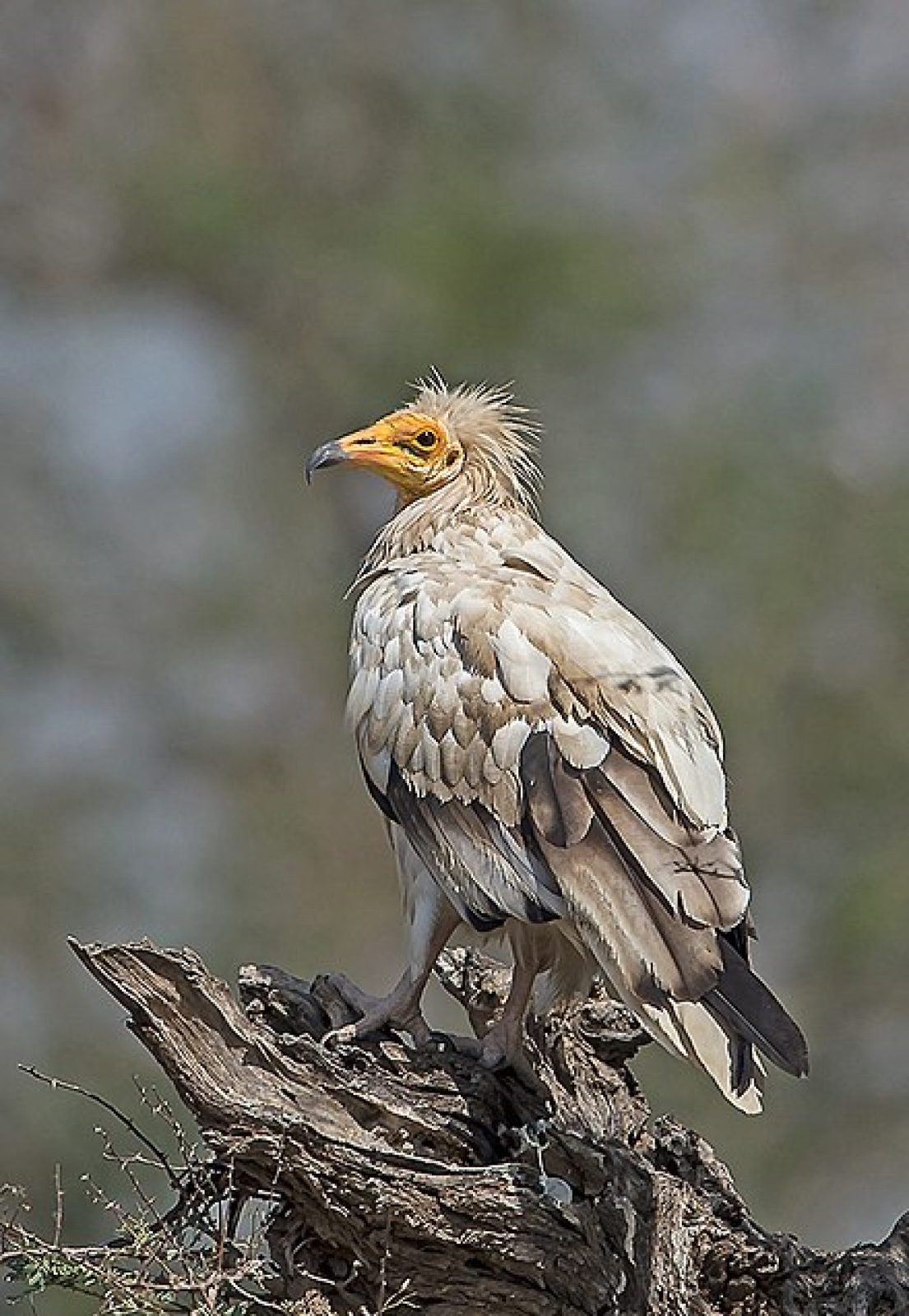An Egyptian vulture has been seen within the UK for the first time in over 150 years. The first thing to note, is that despite the name Egyptian vulture, these...

Egyptian vulture

The Egyptian vulture, also called the white scavenger vulture or pharaoh’s chicken, is a small Old World vulture in the monotypic genus Neophron. It is widely distributed from the Iberian Peninsula, North Africa, West Asia and India. The contrasting underwing pattern and wedge-shaped tail make it distinctive in flight as it soars in thermals during the warmer parts of the day. Egyptian vultures feed mainly on carrion but are opportunistic and will prey on small mammals, birds, and reptiles. They also feed on the eggs of other birds, breaking larger ones by tossing a large pebble onto them.
The use of tools is rare in birds and apart from the use of a pebble as a hammer, Egyptian vultures also use twigs to roll up wool for use in their nest. Egyptian vultures that breed in the temperate regions migrate south in winter while tropical populations are relatively sedentary. Populations of this species declined in the 20th century and some island populations are endangered by hunting, accidental poisoning, and collision with power lines.
There are 3 recognized subspecies
- N. p. ginginianus (Latham, 1790)
- N. p. majorensis Donázar et al., 2002
- N. p. percnopterus (Linnaeus, 1758)
Egyptian vultures are widely distributed across the Old World with their breeding range from southern Europe to northern Africa east to western and southern Asia. They are rare vagrants in Sri Lanka. They occur mainly on the dry plains and lower hills. In the Himalayas, they go up to about 2,000 metres (6,600 ft) in summer. In Armenia, breeding pairs have been found up to 2,300 meters.
Most Egyptian vultures in the subtropical zone of Europe migrate south to Africa in winter. Vagrants may occur as far south as in South Africa although they bred in the Transkei region prior to 1923. They nest mainly on rocky cliffs, sometimes adopting ledges on tall buildings in cities and on large trees. Like many other large soaring migrants, they avoid making long crossings over water. Italian birds cross over through Sicily and into Tunisia making short sea crossings by passing through the islands of Marettimo and Pantelleria with rare stops on the island country of Malta. Those that migrate through the Iberian Peninsula cross into Africa over the Strait of Gibraltar while others cross further east through the Levant. In summer, some African birds fly further north into Europe and vagrants have been recorded in England, Ireland, and southern Sweden.
Migrating birds can sometimes cover 500 kilometres (310 mi) in a single day until they reach the southern edge of the Sahara, 3,500 to 5,500 kilometres (2,200 to 3,400 mi) from their summer home. Young birds that have not reached breeding age may overwinter in the grassland and semi-desert regions of the Sahel.
Egyptian vulture populations have declined in most parts of its range. In Europe and most of the Middle East, populations in 2001 were half of those from 1980. In India, the decline has been rapid with a 35% decrease each year since 1999. In 1967–70, the area around Delhi was estimated to have 12,000–15,000 of these vultures, with an average density of about 5 pairs per 10 km2. The exact cause of the decline is not known, but has been linked with the use of the NSAID Diclofenac, which has been known to cause death in Gyps vultures.
Egyptian vulture makes an appearance on the Scilly Isles
- Tim
- June 16, 2021
An Egyptian vulture has been seen within the UK for the first time in over 150 years. The first thing to note, is that despite the name Egyptian vulture, these...
Egyptian vulture makes an appearance on the Scilly Isles
- Tim
- June 16, 2021
An Egyptian vulture has been seen within the UK for the first time in over 150 years. The first thing to note, is that despite the name Egyptian vulture, these...











